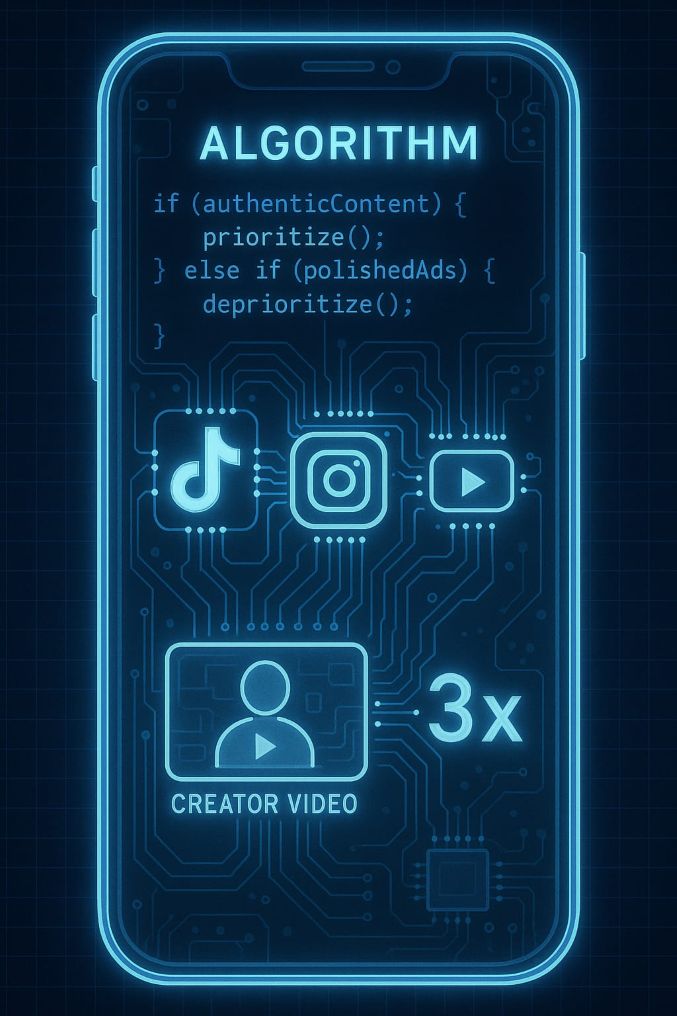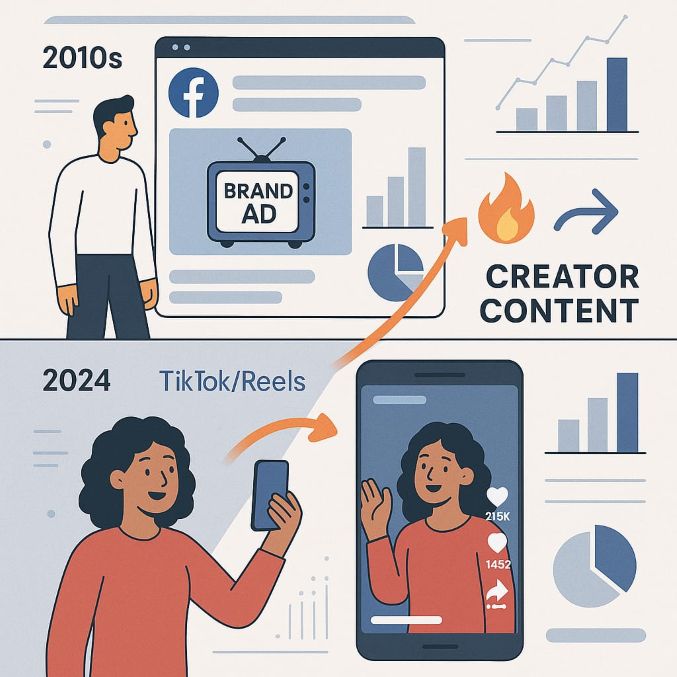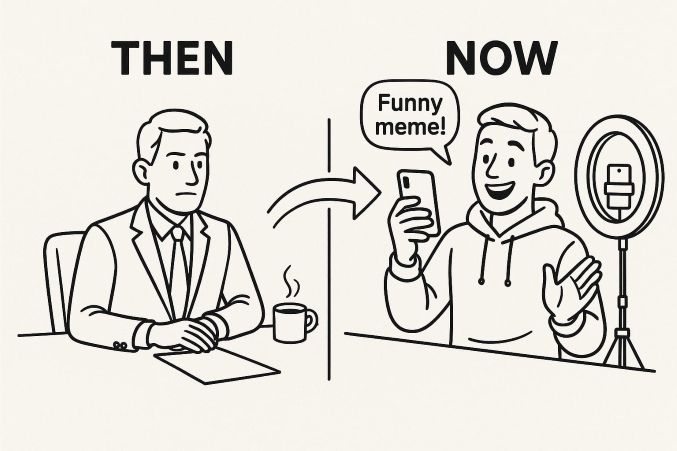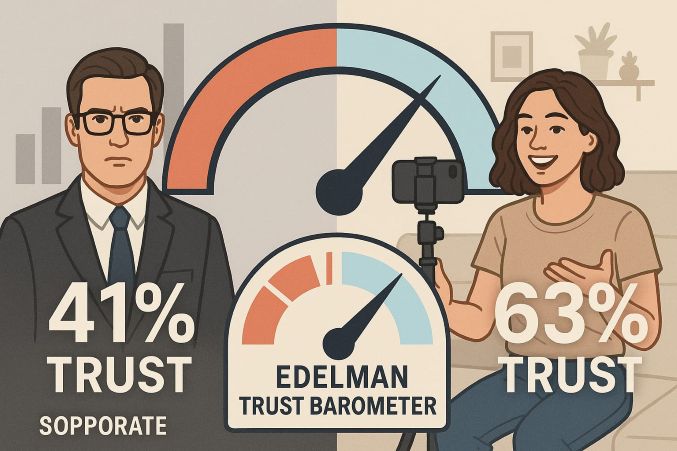Creators vs Brands: Who's Winning the Social Attention War?
The war for social media eyeballs has changed in a fundamental way. Ten years ago, brands held the reins with expensive ad campaigns and celebrity spokespeople. Now, individual creators—equipped with nothing more than a phone and candor—are winning the attention game.
So how did this come to pass? And can brands somehow regain the ground they've lost?
Let's break down the first five key factors defining this war—with facts, trends, and actionable insights.
1. Introduction: The New Battleground for Social Attention
The Fall of Brand Supremacy
Brands previously dictated social media through sheer budget influence—amplifying glossy ads, paying influencers, and dominating feeds with professional content. But platform algorithms have changed, and so have user attitudes.
- TikTok's success showed that unfiltered, real-world content trumps studio-level productions.
- Instagram's shift to Reels demonstrated that even Meta couldn't avoid adopting the creator-first approach.
- YouTube Shorts' rapid expansion solidified that personality-led, short-form content triumphs.
Why Creators Are Winning
Creators succeed because they:
✅ Talk directly to their audience (no corporate gatekeepers)
✅ Respond to trends in real-time (where brands must wait for approval chains)
✅ Establish parasocial connections (fans feel like they "know" them)
Data Point: According to a 2024 HubSpot study, 60% of consumers would rather get suggestions from creators than see brand ads—confirmation that trust has moved.
Key Takeaway: Social media isn't a billboard anymore—it's a conversation, and creators are the most skilled conversationalists.

2. Why Algorithms Prefer Personality to Reflected Messaging
How Social Algorithms Actually Work
Sites such as TikTok, Instagram, and YouTube value engagement signals:
- Watch time (Do viewers finish watching the video?)
- Shares & Saves (Is it worth re-watching?)
- Comments & Replies (Does it start conversation?)
Creators do this naturally because:
They pose questions ("Drop a message if you're with me!")
They utilize hooks ("Wait till the end…")
They capitalize on trends quickly (leveraging viral sounds, memes, challenges)
Brands Fight Algorithmic Fit
Most brand content doesn't work because:
It's too promotional (users scroll past it)
It's not spontaneous (over-scripted = low interaction)
It's slow to catch up (trends die before brands even post)
Case Study: CMD Agency discovered that creator content achieves 3x more reach than brand posts on TikTok—plainly because it's built for the algorithm.
Solution for Brands:
Relax the content rules
Inspire employee/creator-telling
Experiment with reactive, trend-jacking posts

3. Authenticity Trumps Corporate Voice—Every Time
The Trust Crisis for Brands
Edelman's 2023 Trust Barometer found that just 41% of individuals trust businesses, but 63% trust influencers and creators. Why?
- Creators convey triumphs AND challenges (making them more human)
- Brands tend to sound like robots (corporate speak = disconnection)
- UGC (User-Generated Content) tends to feel more authentic
Examples of Authenticity Triumphant
- Duolingo's TikTok: Their rapturous, meme-inclined owl character exploded because it didn't sound like an ad.
- Stanley Cups' Explosion: Their expansion wasn't through ads—it was from millions of creators talking about the product organically.
Data Point: A Nielsen study revealed that 92% of consumers believe peer recommendations are more trustworthy than ads.
Brand Takeaway
Lose the "professional" voice where it doesn't belong.
Tap into UGC and authentic customer testimonials.
Let influencers or employees be the human face of the brand.

4. Outbound Engagement: Brands Going Creator-Style
The New Rules of Engagement
Brands' organic reach is dying—so the clever ones are behaving like creators.
How?
- Commenting on viral posts (e.g., Wendy's brutal Twitter responses)
- Jumping on trends early (e.g., Dunkin' collaborating with Charli D'Amelio)
- Posting raw, behind-the-scenes footage
Brands Doing It Right
- Chipotle's TikTok: They don't only share food photos—they get involved in memes, trends, and even roast customers jokingly.
-Gymshark's Community Focus: Rather than generic fitness commercials, they feature actual athletes and gym enthusiasts.
Why It Works:
- Less marketing-y, more entertaining
- Creates a fanbase rather than customers
Action Step for Brands:
-Task a team with real-time trend tracking.
-Foster light-hearted, human engagements in comments/DMs.
5. Micro-Virality & Niche Communities: The Creator Advantage
The Power of Niche Trends
Creators dominate because they tap into subcultures before they go mainstream:
- #BookTok turned obscure novels into bestsellers.
- #CleanTok made cleaning products sell out.
- Indie artists blow up from a single TikTok trend.
Why Brands Miss These Waves
- They target broad demographics (instead of micro-communities)
- They’re slow to react (by the time they post, the trend is dead)
- They lack authentic community ties
Case Study:
A micro-skincare brand can make CeraVe go viral in a single video, whereas the brand's own posts receive little activity.
How Brands Can Evolve:
- Monitor emerging trends with social listening tools.
-Collaborate with micro-influencers in specialty areas.
- Participate in community discussions (not only promotions).
6. Building Communities: Creator Secret Tool vs. Brand Challenges
The Anatomy of Creator Communities
Top creators do more than build up followers - they design complete ecosystems where:
- Members feel a sense of ownership (e.g., MrBeast's "Beast Philanthropy" allows fans to vote on charity projects)
- Hierarchies emerge organically (moderators, top commenters, superfans)
- Rituals emerge organically (such as Emma Chamberlain's "coze time" catchphrase)
Psychological Drivers:
- Social identity theory: Fans take on creator personas as an extension of self-image
- Parasocial relationships: 72% of Gen Z say they feel "special friendships" with creators (Pew Research)
Where Corporate Community Efforts Fail
Most brands commit these same fatal flaws:
- Over-moderating conversations (killing organic discussions)
- Prioritizing vanity metrics (pursuing follower numbers instead of actual engagement)
- Disregarding the 1-9-90 rule (1% creators, 9% engagers, 90% lurkers)
Case Study Deconstruction:
- Peloton (Success): Established cult-like community through leaderboards, hashtags (#PelotonMoms) and in-real-life meetups
- Web3 Brands (Failure): NFT collections centered around profit rather than community building imploded 92% in 2023 (Chainalysis)
Sophisticated Brand Strategies:
- Construct "Status Ladders" (Reddit's karma system, Starbucks' tiered rewards)
- Build Community Lore (Duolingo's "streak society" mythology)
- Empower Member-Led Initiatives (Sephora's Beauty Insider Community councils)
7. Playbook Wars: Agile Creators vs Bureaucratic Brands
The Creator Content Machine
Top creators work like:
- Daily content sprints (Airrack churns out 7-10 videos a week)
- Rapid-fire testing (Emma Chamberlain tests 3+ thumbnails per video)
- Algorithm hacking (MrBeast's team monitors 27 engagement metrics)
Process Breakdown:
- Trend-spotting: Leveraging tools like TrendTok and ChannelMeter
- Rapid production: Shooting/editing within 4 hours or less
- Optimization loops: A/B testing captions in real-time
Corporate Content Quicksand
Enterprise marketing teams are confronted with:
- 14.3 day average approval cycles (CMO Council)
- 52% content killed by legal (Edelman Trust Report)
- 87% wasted spend on underperforming formats (Nielsen)
Innovative Brand Solutions:
- War Rooms: L'Oréal's 24/7 TikTok monitoring center
- Pre-Approved Banks: Coca-Cola's library of 500+ legal-cleared assets
- Decentralized Creation: Unilever's 10,000+ nano-influencer network
Toolkit for Corporate Agility:
- TikTok's Creative Center (real-time trend data)
- OpusClip (AI repurposing tool)
- Sprinklr's Listening Clouds (sentiment tracking)

8. The Trust Economy: How Creators Monetize Better
Creator Monetization Flywheel
The most successful creators:
- Create genuine trust (3+ year average audience relationship)
- Diversify revenue (average 7 revenue streams - Forbes)
- Tap into scarcity (limited merch drops, time-limited offers)
Revenue Stream Deep Dive:
- Affiliate Marketing: 43% of creators' main income (LTK)
- Digital Products: $2.3B industry (CourseHero)
- Community Subs: Patreon saw 269% growth since 2020
Brand Commerce Challenges
Historical models fare poorly with:
- 3.2% average conversion rates (compared to 8.7% for creator content)
- 72% cart abandonment on brand sites (Baymard)
- Waning organic reach (Meta pages now see an average 2.6% engagement)
Hybrid Success Stories:
- Anthropologie's Creator Collective: 300% ROI from UGC-fueled PDPs
- Sephora's #SephoraSquad: 19% sales boost from micro-influencer posts
- Gymshark's Athlete Program: 60% revenue from community-driven drops
Future Payment Models:
- Performance-based partnerships (only pay for conversions)
- Revenue sharing (similar to YouTube's Partner Program)
- Blockchain-enabled tips (Superfluid streaming payments)
9. Collaboration Chemistry: What Makes Partnerships Work
The Collaboration Spectrum
From transactional to transformational:
- Sponsorships (single paid posts)
- Affiliate Programs (performance-based)
- Equity Partnerships (similar to Prime Hydration)
- Joint Ventures (creator-brand hybrid entities)
Science of Successful Pairings:
- Audience Alignment Scores (Demographic Pro's matching algorithm)
- Content Style Compatibility (HypeAuditor's tone analysis)
- Values Congruence (RepTrak's sentiment mapping)
Execution Masterclass:
- Prep Work: 3-month "dating period" before contracts
- Content Freedom: 73% better performance when creators own creative
- Amplification Strategy: Coordinated posting schedules
Failure Analysis:
- Estée Laundry's #SponsoredFail: 61% negative sentiment on forced collabs
- Fyre Festival 2.0: Micro-influencers still taking flak years on
Contract Must-Haves:
- Usage Rights Clarity
- Exclusivity Windows
- Performance Clauses
- Crisis Protocols
10. 2025 and Beyond: The Converged Future
Four Future Scenarios
- Creator Conglomerates (such as Beast Philanthropy growing into media empires)
- Brand-as-Creator (CEOs now full-time content machines)
- AI Personas (computer-generated influencers with 24/7 content)
- Regulatory Reckoning (FTC reigning in undisclosed sponsorships)
Technology Disruptors:
- Generative AI: 63% of creators now employ AI tools (Adobe)
- Virtual Influencers: Lil Miquela's $15M yearly revenue
- AR Commerce: Snapchat's 3.4x higher conversion rates
Career Evolution:
- Creator MBAs: Harvard's new creator economy courses
- Unionization Moves: SAG-AFTRA expanding into digital creators
- Platform Fragmentation: Rise of 150+ niche creator platforms
Strategic Implications for Brands:
- Talent Pipelines: Creator development academies
- IP Co-Creation: Shared ownership models
- Web3 Integration: Tokenized fan economies
Final Prediction:
By 2027, the top 100 brands will all have:
- In-house creator studios
- Decentralized content teams
- Real-time trend labs
- Community hedge funds
The brands that survive will be those that abandon "working with creators" and begin functioning like creator-native organizations.


Comments
No Comments To Display